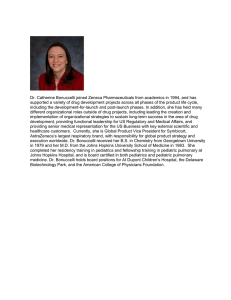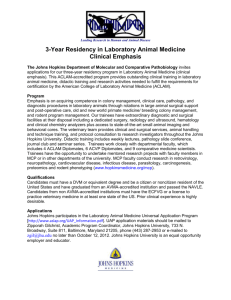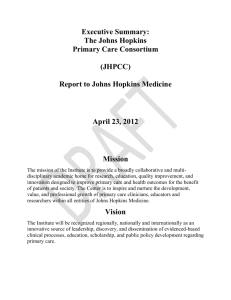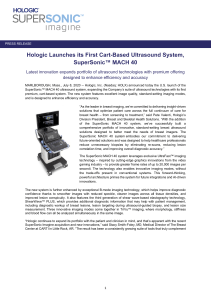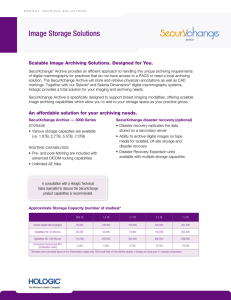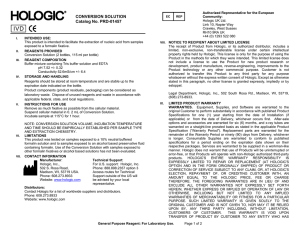Diagnostic Update Agreements roundup
advertisement
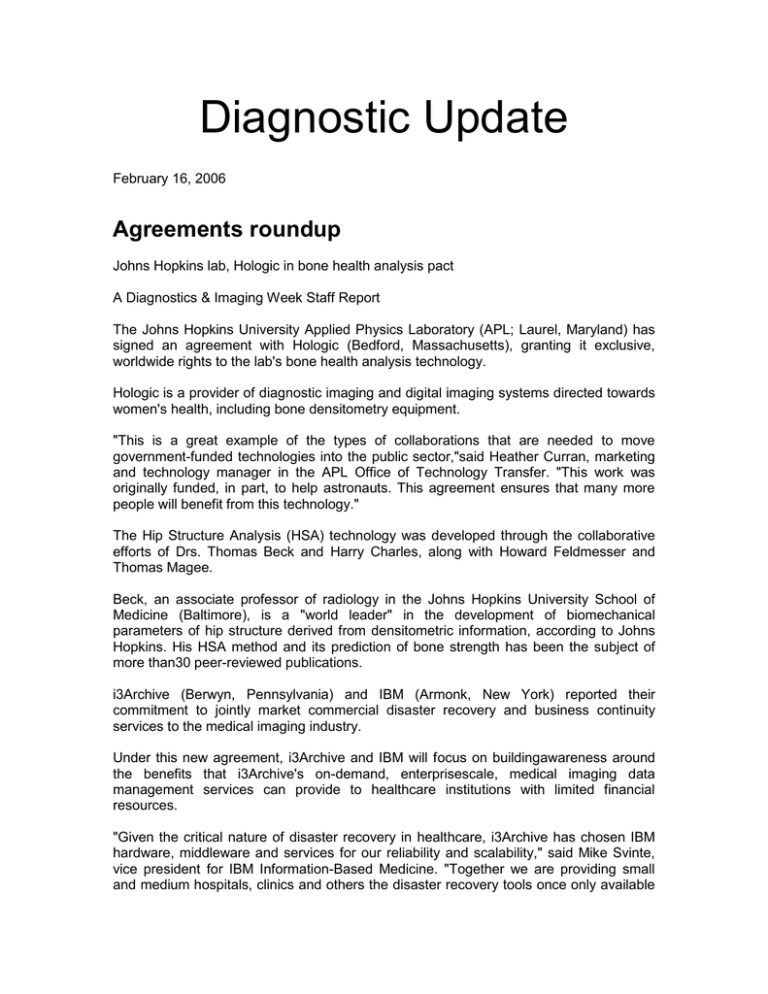
Diagnostic Update February 16, 2006 Agreements roundup Johns Hopkins lab, Hologic in bone health analysis pact A Diagnostics & Imaging Week Staff Report The Johns Hopkins University Applied Physics Laboratory (APL; Laurel, Maryland) has signed an agreement with Hologic (Bedford, Massachusetts), granting it exclusive, worldwide rights to the lab's bone health analysis technology. Hologic is a provider of diagnostic imaging and digital imaging systems directed towards women's health, including bone densitometry equipment. "This is a great example of the types of collaborations that are needed to move government-funded technologies into the public sector,"said Heather Curran, marketing and technology manager in the APL Office of Technology Transfer. "This work was originally funded, in part, to help astronauts. This agreement ensures that many more people will benefit from this technology." The Hip Structure Analysis (HSA) technology was developed through the collaborative efforts of Drs. Thomas Beck and Harry Charles, along with Howard Feldmesser and Thomas Magee. Beck, an associate professor of radiology in the Johns Hopkins University School of Medicine (Baltimore), is a "world leader" in the development of biomechanical parameters of hip structure derived from densitometric information, according to Johns Hopkins. His HSA method and its prediction of bone strength has been the subject of more than30 peer-reviewed publications. i3Archive (Berwyn, Pennsylvania) and IBM (Armonk, New York) reported their commitment to jointly market commercial disaster recovery and business continuity services to the medical imaging industry. Under this new agreement, i3Archive and IBM will focus on buildingawareness around the benefits that i3Archive's on-demand, enterprisescale, medical imaging data management services can provide to healthcare institutions with limited financial resources. "Given the critical nature of disaster recovery in healthcare, i3Archive has chosen IBM hardware, middleware and services for our reliability and scalability," said Mike Svinte, vice president for IBM Information-Based Medicine. "Together we are providing small and medium hospitals, clinics and others the disaster recovery tools once only available to the larger institutions." In November, i3Archive said that it had extended the capabilities of its GRID-based medical imaging architecture to service the needs of business continuity and disaster recovery for picture archiving andcommunications systems (PACS). In doing so, i3 said it exceeded the HIPAA requirements for data recovery and provided an "unprecedented" ability to provide "fail-over" access to a replicated, virtual instance of an existing PACS environment that can be used during periods ofunavailability or inaccessibility. In other agreements news, BioForce Nanosciences (Ames, Iowa) said it is collaborating with Iowa State University (ISU; also Ames) to develop a sensitive nanotechnology-based method for detecting food-borne pathogens. Funding for this project was awarded last week from the universityas a part of the Grow Iowa Values Fund program, which fosters the development of commercial applications from research. The primary investigator on the project is Dr. Byron Brehm-Stecher, a faculty member in the department of food science and human nutrition at ISU, where the pathogenrelated work will be performed. The focus of his research is to provide new tools for the rapid and label-free detection of pathogen-specific nucleic acid sequences with the potential to benefit the food industry, the medical and environmental diagnostics industries and the biotechnology and biodefense sectors.

